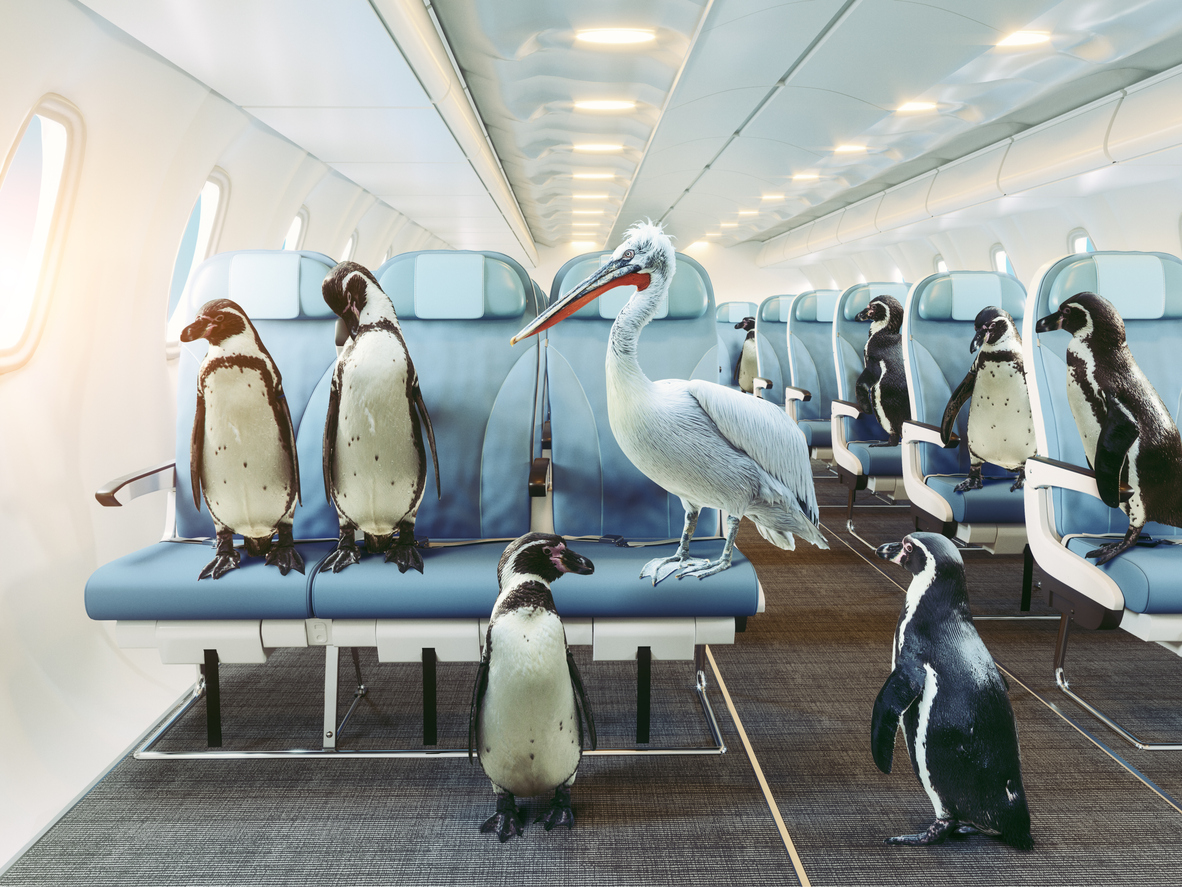
Seyfarth Synopsis: Emotional support animals will no longer be categorized as “service animals” under the Air Carrier Access Act under new Department of Transportation regulations.
Questionable verifications for certain assistance animals have frustrated the airline industry for years. From peacocks to pigs, all sorts of furry and feathered companions have accompanied individuals on domestic and international flights in the guise of “emotional support animals” (ESAs) sitting pretty in cabins next to their owners. While stories of such support animals are entertaining, complaints from passengers, increasing requests to transport unusual species of animals on board aircrafts disguised as ESAs, and thousands of comments in the rulemaking process prompted the U.S. Department of Transportation (DOT) to take action. Just last week the DOT declared that airlines “are not required to recognize emotional support animals as service animals and may treat them as pets.” This recent final rule under the Air Carrier Access Act (ACAA) will change how emotional service support animals are categorized for air travel. The DOT also provided a brief summary of the rule on its website.
To understand the impact of this change, let’s review how other disability access laws address service animals and emotional support animals:
A service animal, under Title III of the Americans with Disabilities Act (ADA), is a dog that is individually trained to do work or perform tasks for people with disabilities. Public accommodations must allow service dogs to accompany people with disabilities in all areas of a facility where the public is allowed to go, and are only allowed to ask two questions to determine if the animal is a service animal. The public accommodation cannot ask about the disability, require medical documentation, require a special identification card, certificate, or training documentation for the dog, or ask that the dog demonstrate its ability to perform the work or task it has been trained to perform. And while miniature horses are not technically service animals, the ADA requires public accommodations allow them to accompany individuals with disabilities who require their assistance due to a disability subject to weight and size limitations. The ADA does not require public accommodations to allow ESAs into their facilities.
ESAs provide comfort and support to their owners, but are not trained to perform any work or task. Unlike the ADA, the Fair Housing Act (FHA) recognizes ESAs as “assistance animals”—defined as any “animal that works, provides assistance, or performs tasks for the benefit of a person with a disability, or that provides emotional support that alleviates one or more identified effects of a person’s disability.” The FHA requires housing providers to allow ESAs as a reasonable accommodation (regardless of any pet restrictions) when a resident makes a request that is supported by reliable disability-related information or when the disability-related need for the animal is apparent.
Things are different up in the sky. The ACAA has maintained a much broader definition of “service animal” for many years—until now. Previously, the ACAA defined “service animal” to include “any animal that is individually trained or able to provide assistance to a person with a disability; or any animal that assists persons with disabilities by providing emotional support.” The DOT’s new rule brings this definition more in line with the ADA’s definition of service animal. A service animal under the ACAA is “a dog, regardless of breed or type, that is individually trained to do work or perform tasks for the benefit of a qualified individual with a disability, including a physical, sensory, psychiatric, intellectual, or other mental disability.”
Unlike the ADA, the ACAA allows airlines to require passengers to submit two forms created by the DOT. The first concerns the behavior and health of the service animal(s), and the second requires assurances by the animal owner that the service animal(s) will not need to relieve themselves on flights longer than 8 hours. These forms can be required up to 48 hours in advance of the date of travel if the travel was booked prior to that time. In addition, each passenger may only bring up to two service animals, provided they all fit in the passenger’s foot space on the plane. ADA regulations, on the other hand, do not limit the number of service animals a person with a disability can bring into a place of public accommodation.
The skies are not so friendly to horses either. Unlike the ADA, miniature horses—even those trained to perform work or tasks for an individual with a disability—can be excluded from aircraft cabins.
The bottom line: The ACAA now only requires airlines to allow two service dogs per passenger to fly for free. All other animals are subject to whatever rules or fees the airlines choose to impose. Keep in mind, however, that these new rules only apply to air travel and have no impact on existing regulations relating to service animals and ESAs in public accommodations and housing.
Learn more about service animals and other tips for ADA compliance here in honor of the 30th anniversary of the ADA!
Edited by Minh N. Vu and Kristina M. Launey